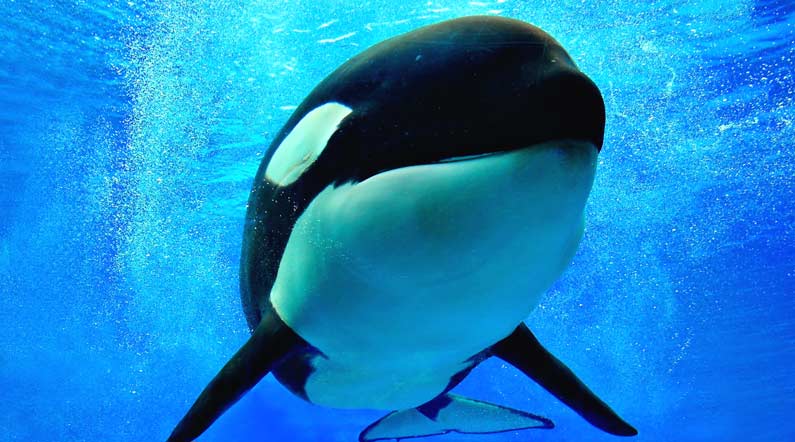If you’re a brand manager or CMO, how do you update a successful brand proposition that continues to deliver to millions of satisfied customers, but is starting to show some cracks? Some might argue why touch the golden goose? In a previous blog, we talked about “if it ain’t broke, break it”. What if these cracks are because of a fundamental weakness in your key differentiator? What do you do when alternative brand associations may not solve the problem or differentiate you enough?
SeaWorld faces this issue. SeaWorld has recently been in the news because of the attention the movie “Blackfish” has brought to the condition of orca’s (SeaWorld’s killer whales) in captivity. Relax, this is not a political blog but rather a brand blog. But, from a marketing perspective, what will happen to a SeaWorld brand since that has been tied to “Shamu” the Killer Whale for over 50 years?
Last week, SeaWorld announced attendance was down 13% in the first quarter of 2014 and the Themed Entertainment Association reported a 4% decline in 2013 SeaWorld attendance (vs. +3% growth rate for theme parks). While park visitors are still excited to see the orcas, many express concern for the well-being of these and other sea mammals. In March, a California state Assemblyman introduced a bill that would prohibit orca shows in theme parks. This negative press has started taking a toll with high profile entertainers like Willie Nelson cancelling appearances at SeaWorld while others have declined invitations to perform. CNN has run the movie “Blackfish” multiple times to strong ratings. Moreover, Millennial’s are known to be more vocal in their support of animal rights causes –threatening future attendance.
Strong brands are tied to their business model and core product offering. If the product or service becomes less relevant, marketers have two options: reposition the brand away from the offending product or service element, like Kentucky Fried Chicken did in the 90’s when it renamed itself KFC, to minimize “fried” connotations, and started offering healthier grilled chicken offerings. The other option is to identify and introduce completely new brand differentiators that will resonate strongly with consumers.
SeaWorld’s Conundrum
Over the last few years, theme park competitors have been innovating and delivering more new attractions. During this time, has SeaWorld kept its head in the sand? Absolutely not. SeaWorld has aggressively been improving its product offering, including adding theme park style thrill rides, making marine life more interesting through more engaging shows, thoughtful integration of education about sea life and deepening their credibility by highlighting the research being conducted at the Hubbs SeaWorld Institute. Finally, they’ve transformed the image of Shamu from killer whale to relatively cuddly mascot. The orca show is now called the “One Ocean” show. Visitors can still dine with Shamu but references to “killer” whales are more discreet.
Knowing that their key brand differentiator is being attacked, SeaWorld has been proactive in evolving its business model. They are considering “Shamu’s” obsolescence and planning to ensure their long term success by expanding their brand definition to state “SeaWorld blends imagination with nature and enables our guests to celebrate, connect with, and care for the natural world we share.”
A Tale of Caution
The risk is that once a core brand differentiator starts to unravel, it might be hard to create new, compelling differentiators. Consider Kodak. In the early 2000’s, Kodak understood that film would become obsolete in the era of digital cameras. They predicted an orderly market decline over 10 years. In less than two years, Kodak’s film business was decimated and never recovered. Kodak tried leveraging their brand strength by entering the digital camera and printer categories but they failed in the face of stronger brands.
While it’s hard to imagine a scenario this dire for SeaWorld, can SeaWorld create strong brand associations for new rides and attractions that are distinctive and differentiating enough to effectively compete with “The Magic Kingdom” to capture mindshare, imagination and inspire visitors to choose SeaWorld over other brands? While SeaWorld has worked hard to evolve its brand experience to continue to appeal to its core audience – families, Shamu is still a huge differentiator.
Now that some damage has been inflicted on SeaWorld brand and public perceptions are shifting, we don’t believe that the attacks on “Shamu” will cease and SeaWorld has to reimagine the brand in the face of strong competitors that are both innovative and growing. Fortunately, SeaWorld is the king of marine mammal aquatic parks. They will survive, but in what form? How relevant will SeaWorld be without Shamu? Maybe they can become an eco-resort type park…blending fun with a deeper, more engaging marine mammal educational experience?
What do you think? Feel free to share examples of brands you think have done a great job in shifting their brand strategy or value proposition in the face of external or internal changes.


Recent Comments